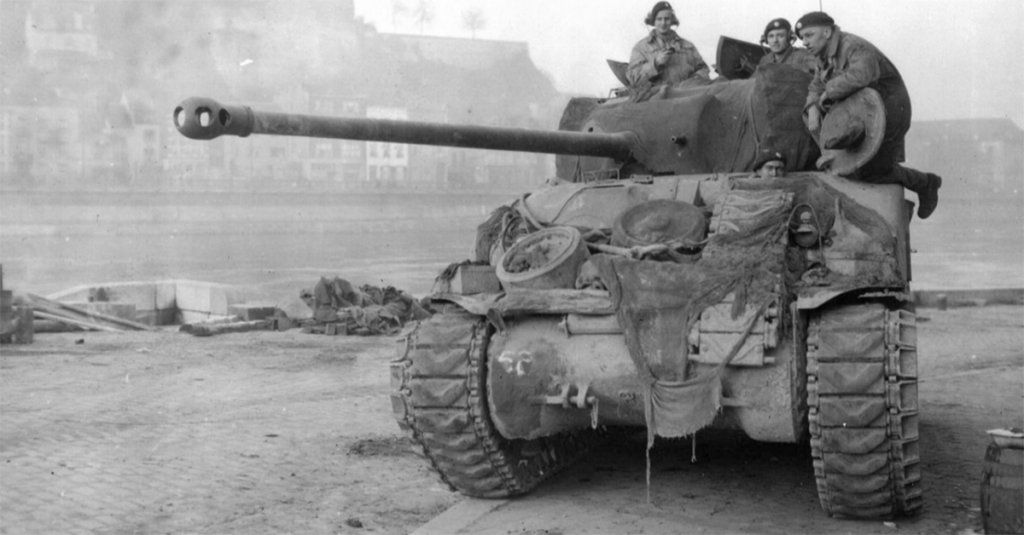

The Sherman tank was a powerful force to be reckoned with on the battlefields in WWII; it was fast and mobile and it shelled out plenty of firepower.
It provided just enough cover for American ground troops as it stomped through the German front lines. The Sherman was designed to patrol over enemy bridges and it was easily transported on railroad cars.
When the U.S. decided to invade Europe, General Patton selected the Sherman as his particular tank of choice and wanted as many to roll off the assembly lines as possible. Nearly 50,000 were produced between 1942 and 1945.

Weighing in at 33 tons, it sustained a speed of 26 miles per hour and housed 2 inches of armor. Many saw the image of the Sherman tank to be invincible just like the American war effort, but the brave soldiers who served as tank crew members believed that it had too many engineering flaws and was far inferior compared to the German’s Tiger and Panther tanks.
The Sherman tank was equipped with a fully-transversing 75mm turret short barrelled gun that fired a high explosive shell 2,000 feet per second. Compared to the German tanks that shot accurately at 3,500 feet per second, the enemy’s armor piercing ammo was 2-3 times more effective.
READ MORE: THE SHERMAN WAS ACTUALLY A GREAT WWII TANK
It was recommended that to defeat the Germans, the tank crew had to speed up and flank around their battlefield rivalry and get within 600 yards range to be effective.
Captain Belton Y. Cooper, author of Death Traps and a member of the 3rd Armor Division maintenance unit, recounts knowing how inferior the Sherman was after seeing its physical destruction firsthand. He knew it was no match for the Nazi’s arsenal.
WATCH HERE:
“We lost 648 tanks totally destroyed in combat, another 700 knocked out, repaired and put back into action,” Cooper says. “That’s 1,348 tanks knocked out in combat. I don’t think anyone took that kind of loss in the war.”

(HistoryAndDocumentry, YouTube)
